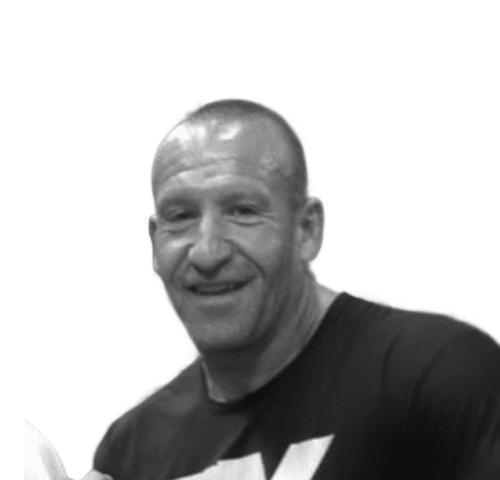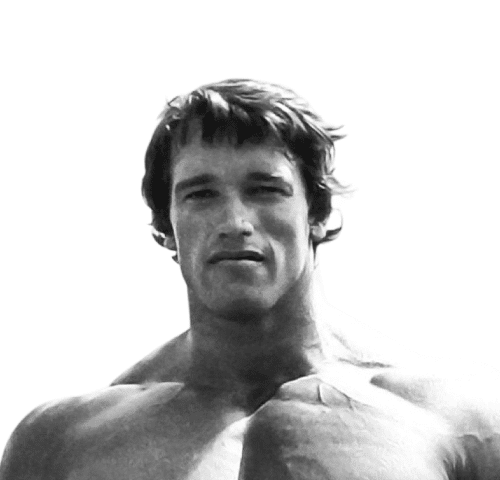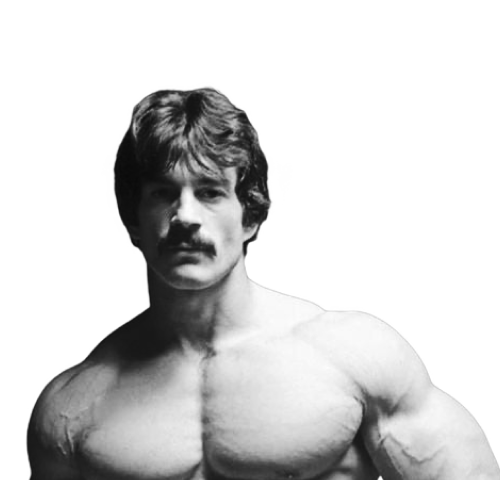Dorian Yates’ Workout Routine in 2025

The Heavy-Duty Plan That Built a Mr. Olympia
Dorian Yates is known for his intense and focused approach to bodybuilding. His training style, often built around high-intensity sessions, helped him win six Mr. Olympia titles. This article takes a close look at the Dorian Yates workout routine, including how he structured his split, his most famous exercises, and why his methods still stand out in the world of training.
- Last Updated: August 19, 2025
-
-
Weekly Training Split
Dorian Yates built his training approach around intensity, effort, and recovery. Instead of pushing through a high-volume schedule, he trained fewer days per week but made each session extremely demanding. His structure focused on working each muscle group about once every six days, which allowed for complete recovery and better long-term progress.
- Day 1 (Monday): This day was dedicated to shoulders, triceps, and abs. He trained with heavy presses, lateral raises, overhead extensions, and cable crunches. The session was intense but focused on perfect form and controlled reps.
- Day 2 (Tuesday): Back and rear delts were the focus, using exercises like barbell rows, pulldowns, deadlifts, and reverse flyes. The goal was to train both the upper and lower parts of the back while isolating the rear shoulders.
- Day 3 (Wednesday): A full day of rest, allowing the body to recover from the demanding back session. Yates placed his rest days strategically after heavy training to boost recovery and performance.
- Day 4 (Thursday): Chest, biceps, and abs were trained with movements like incline presses, dumbbell flyes, barbell curls, and weighted leg raises. Each set was pushed to failure with strict control and short rest periods.
- Day 5 (Friday): Another recovery day to help the upper body rebuild. This also helped reduce joint stress from heavy pressing and curling earlier in the week.
- Day 6 (Saturday): Legs were hit hard with squats, leg presses, leg curls, and calf raises. This session was often one of the most intense, focusing on slow, controlled reps with heavy weight and minimal sets.
- Day 7 (Sunday): The final rest day of the week, giving the entire body time to recharge before restarting the split.
This weekly split became the foundation of the Dorian Yates workout routine. It focused on short, high-effort sessions with heavy weights and clean form, supported by frequent rest to maximize results without burning out.
-
Day 1 Training: Shoulders, Triceps, and Core
The first training day focused on upper-body pushing muscles and core strength. Yates used a mix of heavy compound movements and isolation work to fully fatigue the shoulders and triceps before finishing with abs. Every rep was performed with complete control, aiming for failure in just one working set per exercise.
- Dumbbell Shoulder Press: After two warm-up sets, he performed 8 to 10 reps with heavy weight. This was the primary compound movement for front and side delts, allowing for maximum load under controlled form.
- Dumbbell Lateral Raise: Using moderate weights, he trained for 6 to 8 reps with a focus on strict movement and constant tension. This helped build width across the shoulders without engaging traps.
- One-Arm Cable Lateral Raise: Performed after a single warm-up set, this isolation move helped fine-tune shoulder symmetry. Each arm worked independently through 6 to 8 clean, controlled reps.
- Dumbbell Shrugs: Aimed at the upper trapezius, he started with a warm-up and then went into a heavy set of 6 to 8 reps. A strong pause at the top helped increase trap development and neck thickness.
- Cable Pushdown (Overhand Grip): Completed after two lighter sets, this movement focused on the long head of the triceps. He maintained strict form and finished with 6 to 8 heavy reps.
- Lying Triceps Extension (EZ-bar or Barbell): With a warm-up set of 10 reps to start, this was followed by one intense working set. The movement stressed the full range of the triceps with deep extension and powerful lockout.
- One-Arm Cable Pushdown (Underhand Grip): Used as a finishing move, this isolated the inner head of the triceps. Each arm performed about 6 to 8 slow, concentrated reps without momentum.
- Roman Chair Sit-up: Focused entirely on contracting the core, this was performed for around 20 reps per set. Yates maintained a full range and avoided any swinging.
- Crunch: Targeting the upper abs, he aimed for 20 reps while keeping tension on the midsection throughout. The movement was simple but performed with intention.
- Reverse Crunch: With 10 to 15 reps per set, this movement helped activate the lower abdominals. He controlled both the lift and descent for maximum effectiveness.
The structure of this day supported both size and definition across multiple muscle groups. Within the Dorian Yates training split, Day 1 delivered a balanced mix of strength work and accessory focus to set up the rest of the week.
-
Day 2 Workout: Lats, Mid-Back, and Rear Delts
Day 2 focused on pulling movements, with exercises selected to hit the upper, mid, and lower back along with the rear delts. The structure followed a flow from lat pulldowns to rowing movements, finishing with spinal erector work and heavy deadlifts. Rear delts were included to round out upper-body balance and improve posture.
- Close-Grip Lat Pulldown: Performed for 6 to 8 reps after two warm-up sets, using a narrow underhand grip to maximize lat activation. Each rep was pulled with control and held briefly at the bottom.
- Standing Straight-Arm Pulldown: Used early in the workout to pre-fatigue the lats before heavier rowing. He kept his arms nearly straight and focused on the squeeze with each rep.
- Bent-Over Barbell Row: Known as the “Yates Row,” this was one of his main back-builders. After warming up, he worked through 6 to 8 heavy reps using an underhand grip and a slight torso angle.
- Dumbbell Bent-Over Row: This single-arm row was done after a warm-up with controlled reps for each side. It allowed him to target the lats and mid-back individually while minimizing momentum.
- Seated Cable Row: A heavy rowing movement using a close grip for 6 to 8 reps. This helped train thickness through the mid-back and supported posture under heavy loads.
- Rear Delt Machine Flye: Performed with a reverse grip to isolate the posterior deltoids. Aiming for 6 to 8 reps, he paused at the peak of each rep for added contraction.
- Bent-Over Lateral Raise: Done using dumbbells, this movement worked rear delts through a full range with minimal trap involvement. The focus was on slow tempo and stretch.
- Back Extension: Usually performed for 6 to 8 reps, this helped strengthen the spinal erectors and supported recovery from heavier compound lifts.
- Deadlift: Finished the workout with a single heavy set after warming up. By placing this at the end, he avoided early fatigue and was able to focus entirely on form and effort.
Yates relied heavily on compound lifts and focused isolation work to structure his back training. His back workout became one of the most respected routines in bodybuilding for increasing thickness, strength, and detail across every region of the back.
-
Day 3 Off: Rest, Nutrition, and Recovery
Following an intense back session, rest wasn’t just optional for Yates, it was a key part of his training approach. Instead of filling every day with gym time, he used rest days as a chance to reset physically and mentally while keeping his focus on progress.
- Muscle recovery: Rest days gave his body time to repair the damage caused by heavy lifting. Without this break, muscle fibers wouldn’t rebuild properly or grow as effectively.
- Nervous system reset: Recovery wasn’t just about the muscles. Intense training pushed the nervous system hard, and rest allowed it to bounce back and prepare for more demanding sessions.
- Nutrition focus: Meals were designed to support healing with enough protein, healthy fats, and carbohydrates. He didn’t train, but his nutrition remained just as disciplined as it was on training days.
- Optional cardio: While not always included, light cardio was occasionally used to stay lean or improve conditioning. This was especially common during pre-contest phases.
- Mental reset: He also used these days to recharge mentally. Stepping away from the gym helped him stay motivated and avoid burning out during long training phases.
Rest days were just as important as the lifting itself in the Dorian Yates training routine. Prioritizing recovery helped him maintain intensity across each workout while minimizing the risk of injury or burnout.
-
Supplements To Help You Survive The Dorian Yates Workout Routine
This workout routine demands more than just willpower, it pushes the body to its physical limits. To keep up with the intensity, many lifters use supplements that help them recover faster, build muscle, and perform better. These additions don’t replace the training, but they support it in important ways.
- Whey protein powder: Supports muscle growth by supplying essential amino acids right after training. It also helps prevent muscle breakdown when consumed consistently, especially post-workout.
- Creatine monohydrate: Boosts strength by increasing the body’s supply of quick energy during heavy lifts. Over time, it may lead to better performance across compound movements and higher total training volume.
- Branched-chain amino acids (BCAAs): Help protect muscles during high-intensity training sessions. They also play a role in reducing delayed-onset muscle soreness and speeding up post-workout recovery.
- Pre-workout formula: Increases focus and energy before training sessions. It helps improve blood flow, mental clarity, and stamina, allowing you to stay sharp during heavy sets.
- L-glutamine: Assists with muscle repair and may reduce the feeling of soreness after tough sessions. It also supports immune function, which can suffer during periods of intense training.
- Zinc and magnesium (ZMA): Helps regulate sleep, mood, and hormone levels. These minerals are often depleted through sweat, making supplementation important for recovery and overall performance.
- Fish oil (Omega-3s): Supports joint health and helps manage inflammation after workouts. It’s especially useful for lifters dealing with joint pain or stiffness from heavy lifting cycles.
- Multivitamin: Helps cover any nutritional gaps that might slow down recovery or cause fatigue. It ensures your body has the essential nutrients it needs to perform and rebuild.
- Electrolytes: Replenishes minerals lost through sweat during intense sessions. Staying hydrated with proper electrolyte balance can help prevent cramps and keep energy levels stable throughout the workout.
When following a high-effort training split, the right supplements can make a real difference. They help your body handle the stress of training and keep you moving forward without burning out.
-
Day 4 Exercises: Chest, Biceps, and Core
This day placed emphasis on pressing strength, biceps development, and core control. Yates structured his workout to start with heavy compound lifts for chest, followed by focused isolation work to fully exhaust the muscles. He used a similar strategy for biceps, finishing with ab movements to maintain midsection strength.
- Incline Barbell Bench Press: This was his primary chest-builder, targeting the upper portion of the chest. He performed 3 warm-up sets of 12, 10, and 6 reps, followed by one all-out set for 6 to 8 reps. The incline angle helped him move serious weight while still keeping tension on the chest.
- Machine Chest Press: Done after a warm-up, this movement allowed Yates to push to absolute failure without a spotter. He would often lock into position and slowly grind through 6 to 8 reps, making sure every rep counted.
- Incline Dumbbell Flye: This isolation exercise was used to stretch the chest through a wide range of motion. After one warm-up set, he completed 8 to 10 slow, controlled reps to emphasize the inner chest and avoid using the shoulders.
- Cable Crossover: A high-rep finisher that created a strong pump and added definition. He used lighter weight here, squeezing the chest hard at the center for 10 to 12 reps, while focusing on form over load.
- Incline Dumbbell Curl: This biceps movement placed the arms in a stretched position at the bottom, increasing the range of motion. After warming up, he performed 6 to 8 strict reps, often pausing at the top to maximize tension.
- Barbell Curl: One of his heavier biceps lifts, this helped build overall arm mass. He completed a warm-up followed by 6 to 8 reps, using a controlled tempo to prevent body swing and momentum.
- Preacher Curl: Performed with either a machine or EZ-bar, this isolation move minimized cheating and kept tension on the biceps throughout. He aimed for 6 to 8 slow reps with a tight squeeze on each contraction.
- Roman Chair Sit-up: Focused on the upper abdominals, this exercise was done for around 20 reps per set. He kept his hands close to his chest and avoided jerking to keep the movement clean.
- Crunch: Done on the floor or a mat, this helped reinforce the upper core with bodyweight-only resistance. He performed about 20 steady reps while exhaling hard at the top of each rep.
- Reverse Crunch: Targeting the lower abs, this move required slow control throughout the leg lift. Around 10 reps were completed while keeping the hips slightly elevated to increase difficulty.
The chest workout Dorian Yates followed combined strength and isolation work to build size without needing endless volume. By pairing it with direct biceps and core training, he created a complete upper-body session while staying true to his high intensity training style.
-
Day 5: Rest and Muscle Repair
After another intense upper body session, Day 5 was all about giving the body a chance to slow down. Yates treated rest with the same level of intent as training, using it to rebuild and stay mentally focused for the final workout of the week.
- Muscle tissue repair: Heavy chest and biceps sessions caused micro-tears in the muscle. Rest allowed the body to rebuild and grow stronger without interference from more lifting.
- Energy restoration: By taking the day off, he could restore glycogen levels and avoid draining his energy reserves before the next leg session. A proper reset helped him avoid underperformance later in the week.
- Recovery meals: Meals remained structured and nutrient-dense, focused on quality protein, slow-digesting carbs, and fats to support recovery and hormone balance.
- Mobility and light movement: While there was no heavy training, he occasionally added stretching, walking, or light movement to stay loose and aid blood flow.
- Mental break: Rest days gave him space to mentally reset. This time away from the gym helped reduce burnout and gave him space to refocus before going hard again.
The Dorian Yates workout split was built with recovery in mind, and Day 5 played a key role in helping him maintain intensity across each week without breaking down.
-
Day 6: Heavy Lower Body Training for Mass
Leg day was one of the toughest in Yates’ entire week. It wasn’t about doing endless sets but about pushing each movement to its limit. From pre-exhaust techniques to high-rep calf training, every part of the lower body was worked hard and deliberately.
- Leg Extension: Used as a pre-exhaust to activate the quads before compound lifts. He performed warm-up sets of 15 and 12 reps, followed by 10 to 12 hard reps with a tight pause at the top.
- Leg Press: This major compound lift came next, allowing him to load the quads and glutes heavily. After two warm-up sets, he worked up to a final set of 10 to 12 reps pushed to failure with help from spotters.
- Hack Squat: With a warm-up of about 12 reps, this exercise targeted the quads while reducing strain on the lower back. He often adjusted foot placement slightly to hit different parts of the thigh.
- Lying Leg Curl: Used to build hamstring thickness and strength, this machine movement was performed for two sets—one warm-up and one intense working set of 8 to 10 reps. He paused at the top to maximize contraction.
- Stiff-Leg Deadlift: This movement helped stretch and strengthen both the hamstrings and glutes. Typically done for around 10 slow, deliberate reps with either a barbell or dumbbells.
- Single-Leg Curl: Targeted each hamstring individually, ensuring no imbalances were overlooked. He completed 8 to 10 reps per leg, focusing on control and keeping hips stable.
- Standing Calf Raise: A heavier calf exercise done after warming up. He went for 10 to 12 reps using a full range of motion and slow tempo to hit the gastrocnemius muscle hard.
- Seated Calf Raise: Finished off with a seated variation to train the soleus muscle. He used higher reps—around 10 to 12—to fully fatigue the calves and finish the session strong.
This leg-focused day from Dorian Yates’ workout routine highlights his high-intensity training style, one that left no muscle group untouched and no set wasted. Every part of the lower body was challenged, setting the stage for real growth and recovery.
-
Day 7: Rest Day
Yates didn’t treat rest days as downtime, but as an important part of the process. After a full week of intense sessions, he used this day to step back from physical strain and give his body the space to repair and grow.
- Recovery-focused nutrition: He ate in a calorie surplus, prioritizing clean, nutrient-rich meals filled with quality protein, carbs, and healthy fats to help rebuild the muscle tissue broken down during training.
- Sleep quality: He prioritized deep, uninterrupted sleep, often aiming for 8 to 9 hours, understanding that growth hormone and muscle recovery are strongly tied to proper rest.
- Active rest and massage: Instead of staying sedentary, he sometimes included light walking or massage therapy to increase circulation, ease muscle tightness, and support the healing process.
- Stress management: He stayed away from anything physically or mentally draining, allowing his nervous system to relax and ensuring he could train at full intensity the following week.
- No training or cardio: Unlike other programs that push seven days of activity, he did zero lifting or cardio, giving his muscles and joints a complete break from external load and tension.
Rest days were an essential part of the Dorian Yates workout plan. By fully stepping away from the gym once a week, he maximized his results during training and gave his body the recovery time it needed to grow stronger.
-
Daily Workout Routine
Instead of using high volume, Dorian Yates focused on short sessions with maximum intensity. Every rep had a purpose, and each set was carefully planned to push limits without wasting energy.
- Warm-up sets: Before attempting any heavy lifting, he performed 1 to 3 warm-up sets for each exercise. These sets gradually increased in weight and helped activate the muscles without tiring them out before the main set.
- Working sets: His main working set was the core of each exercise. Only one set was taken to complete failure, using maximum effort and strict form to stimulate growth in the shortest time possible.
- Repetition range: Reps varied depending on the muscle group—6 to 8 reps for upper body lifts, 8 to 12 for legs, and 10 to 20 for ab movements. This allowed each area to be trained effectively without unnecessary volume.
- Extended sets: When possible, he used advanced methods like forced reps with a spotter or immediate drop sets when training alone. These techniques pushed the muscles beyond failure to increase intensity.
- Workout tracking: Every workout was recorded in a journal. By keeping track of the weight, reps, and performance, he made sure he was always progressing and never repeating the same effort twice.
- Progressive overload: A key principle in his training. If the weight didn’t increase, the reps did. If reps stayed the same, the weight went up. This constant challenge helped drive consistent results over time.
This approach to training became a core part of the Dorian Yates high intensity training program. It allowed him to build size and strength efficiently without relying on long or frequent sessions.
-
High-Intensity Training Philosophy
Dorian Yates built his legendary physique not by spending endless hours in the gym, but by making every minute count. His High-Intensity Training (HIT) method flipped the traditional volume-heavy approach on its head. The goal was to stimulate maximum growth in the shortest possible time, demanding both physical strength and mental toughness.
- Proven on the Olympia stage: Dorian Yates made High-Intensity Training famous during his reign in the 1990s, using it to dominate the Olympia stage. His all-or-nothing approach set a new standard for intensity in professional bodybuilding.
- Single working sets to failure: After a few warm-up sets, Yates would perform just one working set per exercise, but pushed it until he couldn’t lift another rep. That final set had to be everything he had.
- Short workouts, intense output: His sessions rarely lasted more than 60 minutes. He believed that intensity was what triggered muscle growth, and he trained with laser focus from start to finish.
- Advanced techniques to go beyond failure: He often added forced reps, negatives, or partials after failure to increase stress on the muscle and stimulate further growth. This took a toll on the body and required serious recovery.
- No pacing or saving energy: There were no backup reps in Yates’ routine. He didn’t believe in holding anything back, each set was an all-out battle to test his limits.
- Mental strength as the foundation: Success wasn’t just physical. He approached every set with complete intensity and treated training like a war. His mindset made it possible to push past normal barriers.
His high intensity training method wasn’t just about lifting heavier, it was about giving everything in a single set. By pushing past failure with absolute focus, he proved that intensity, not volume, was the real key to building serious size and strength.
I only know where 0 and 100 are. Train hard, put in the work, train to failure and often beyond… none of these ‘reps in reserve’ bollocks
-
Full Control Over Every Rep
Instead of chasing numbers on the bar, Dorian Yates focused on the quality of each repetition. His mindset wasn’t about lifting the heaviest weight possible but about making every movement count toward building muscle efficiently.
- Focus on the eccentric phase: Yates slowed down the lowering part of each rep to increase time under tension, placing added stress on the muscle. This helped stimulate more growth without relying on extra sets or reps.
- No momentum allowed: He avoided using body movement or swinging the weight, which ensured the working muscle remained under constant load. This approach also reduced the risk of injury during heavy training.
- Mind-muscle connection: Instead of going through the motions, he actively focused on contracting the target muscle with each rep. This built better awareness, allowing him to isolate and train muscles more effectively.
- Strict form over ego lifting: Even as a professional bodybuilder, Yates never sacrificed form to lift heavier. He believed lifting with poor form was not only unproductive but also dangerous in the long run.
- Consistent range of motion: Every lift was taken through a full and controlled range, whether it was pressing, pulling, or curling. This ensured the muscle was being fully engaged and stretched on each repetition.
- Teaching point for beginners: Yates advised that before increasing weights, lifters should spend time learning how to move properly. He felt that controlled reps build the foundation for long-term gains in the gym.
Dorian Yates believed that perfect form wasn’t optional, it was essential. His controlled, focused approach helped build size safely and efficiently, setting a strong foundation for the rest of his training.
-
Progressive Overload
Improvement didn’t happen by chance in Dorian Yates’ training, it was planned and tracked. He approached his workouts with a mindset focused on beating his past performance, no matter how small the gain.
- Detailed training journals: He wrote down every rep, set, and weight used in each session, creating a written log to measure progress and identify weaknesses. This level of tracking made it easy to see where he could push harder the next time.
- Beat-the-logbook mentality: His goal for every workout was to either lift more weight or squeeze out an extra rep with the same load. If he couldn’t improve in some way, the workout wasn’t done.
- Progressive tension with fewer sets: Since he only performed one working set per exercise, that single set had to count. It needed to be heavier or more intense than before to continue triggering muscle growth.
- Forced adaptation through effort: Even if the weight stayed the same, he found ways to make the set more challenging, slower tempo, stricter form, or tighter rest times. The idea was to leave no room for comfort.
- Built-in accountability: Logging every detail added pressure to perform. If he didn’t push forward, it would be obvious in his journal, and that alone kept him honest in the gym.
This consistent focus on progression shaped the effectiveness of his workout routine. By tracking every detail and demanding improvement from himself, he laid the foundation for long-term growth.
-
Injury Management and Training Longevity
With intense training came the need for thoughtful recovery and injury prevention. Dorian Yates didn’t leave this to chance. He built habits into his routine that helped him stay in the gym, even under extreme physical demands.
- Warm-up sets for preparation: Before working sets, he performed multiple warm-up sets to raise body temperature, improve joint mobility, and activate the targeted muscles.
- Safer equipment choices: He preferred machine-based movements for certain exercises, especially when pushing to failure. These helped reduce the strain on joints while still allowing maximum effort.
- Drop sets with control: If he trained alone, he used machines or cables to perform drop sets. This allowed him to reduce the weight quickly and continue the set without risking form breakdown.
- Adjustments after injury: After experiencing injuries like torn biceps and triceps, he became even more careful with exercise selection and execution. Anything that felt unstable or risky was removed from his plan.
- Form over ego: Instead of chasing numbers, he stayed focused on clean technique. This shift helped him maintain intensity while reducing the chances of setbacks.
- Body feedback as a guide: He learned to listen to soreness, fatigue, and tightness as early signs to pull back. Rest and recovery were scheduled when needed, not just when convenient.
These habits helped make his workout plan more than just intense, it was also sustainable. His ability to stay consistent through injury risk and recovery played a big role in his long-term success.
-





